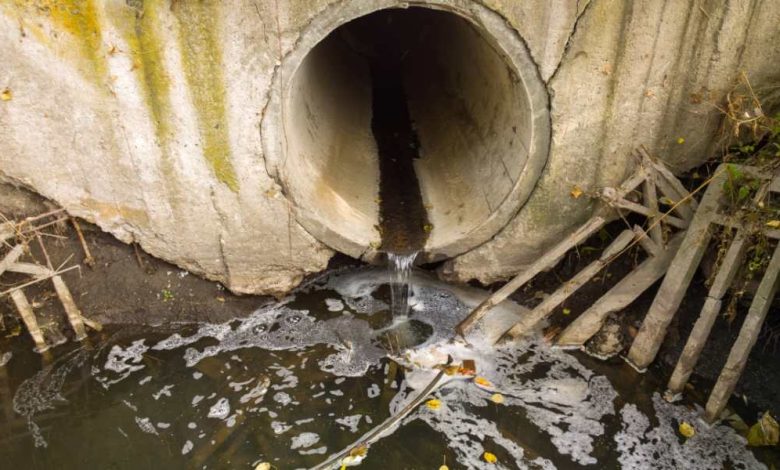What is the easiest way to clear a blockage in the sewer line?
What is the easiest way to clear a blockage in the sewer line?

A blocked sewer line can be a real headache for homeowners. It can cause unpleasant odors, slow draining water, and even result in sewage backups. Luckily, there are several methods to clear a blockage in the sewer line. In this article, we’re going to discuss the easiest way to clear a blockage in the sewer line.
The first method is using a plunger. This is an effective way of clearing minor blockages that occur close to the drain opening. To use this technique, you need to fill your sink or tub with enough water to submerge the plunger head entirely. Then position it over your drain and pump up and down vigorously until you feel resistance easing.
Another popular method is using baking soda and vinegar solution. You’ll need half a cup of baking soda followed by half a cup of white vinegar poured down into the drain opening immediately after each other Débouchage egout.
What is a Blocked Sewer Line?
What is a Blocked Sew? A blocked sewer line is a plumbing issue that can cause significant problems for homeowners. It occurs when something blocks the flow of water through the pipes and prevents wastewater from being carried away from your house. This blockage may cause sewage to backup into your home, resulting in an unpleasant odor and potential health hazards.
If you suspect that your sewer line is blocked, it’s essential to address the issue as soon as possible. Fortunately, there are several methods you can use to clear a blockage in the sewer line quickly and easily. One of the most effective solutions is using a plunger, which creates suction and helps dislodge any debris or buildup within the pipes.
Another option for clearing a blocked sewer line is using baking soda and vinegar. This method involves pouring one cup of baking soda followed by one cup of vinegar down the drain.
DIY Unclogging Options
Clearing a blockage in the sewer line can be a messy and expensive process. However, there are several DIY unclogging options that can save you both time and money. In this article, we will explore some of the easiest ways to clear a blockage in your sewer line.
One of the simplest methods to unclog a sewer line is by using hot water. Boiling water poured down the drain can melt away any grease or oil buildup that may be causing the blockage. Another effective method is using baking soda and vinegar. Mix equal parts of baking soda and vinegar and pour it down the drain followed by hot water after 30 minutes. The chemical reaction between them creates bubbles that help break down any clogs. If these methods do not work, you may need to use a plunger or plumbing snake to remove the obstruction.
Professional Plumbers to the Rescue
Sewer line blockages can be a real headache for homeowners, causing unpleasant smells, slow drains, and even sewage backups. While there are many DIY solutions that claim to clear sewer line blockages, these often fall short in the face of tough clogs or stubborn obstructions. That’s where professional plumbers come in – with the right tools and training, they can quickly and effectively clear your sewer line blockage without causing further damage.
One of the easiest ways to clear a blockage in your sewer line is by using a plumbing snake. This flexible tool is designed to navigate through your pipes, breaking up any debris or buildup along the way. For tougher clogs, professional plumbers may use hydro jetting equipment that uses high-pressure water streams to blast away even the most stubborn obstructions.
Common Causes of Blockages
A blocked sewer line can be a major inconvenience for any homeowner. It can cause the wastewater to back up, leading to unpleasant odors and even flooding of your property. If you’re experiencing such an issue, it’s important to act quickly and find the easiest way to clear the blockage.
First, it is essential to understand what causes blockages in sewer lines. Common causes include flushing of non-degradable materials like wipes or sanitary products down the toilet, pouring grease and oil down drains, tree roots growing into pipes, or simply aging pipes that have accumulated debris over time. Knowing this will help you take preventive measures in the future. Once you’ve identified a blockage in your sewer line, there are several steps you can take. The first is to try using a plunger on the affected drain or toilet bowl.
Prevention Strategies
A blockage in the sewer line is a common problem that can cause significant damage if not addressed on time. The good news is that there are several prevention strategies you can use to avoid the inconvenience and cost of clearing a blockage in your sewer line. Prevention strategies include regular cleaning, proper disposal of waste, and avoiding flushing inappropriate materials.
Regular cleaning of your sewer line is the easiest way to prevent blockages from forming. You should hire a professional plumber to inspect and clean your sewer line regularly, ideally once every year or two years. Regular cleaning helps remove any buildup of grease, hair, soap scum, or other debris that could cause a blockage over time. Proper disposal of waste is another essential strategy for preventing blockages in your sewer line.
Costs of Professional Services
Dealing with a blockage in the sewer line can be an incredibly frustrating experience. Not only does it cause inconvenience, but it can also lead to costly repairs if not dealt with promptly. While some homeowners prefer to handle the situation themselves, others opt for professional services to ensure that the problem is fixed correctly. However, many people are hesitant to call professionals due to concerns about the costs involved.
The cost of professional services for clearing a blockage in the sewer line can vary depending on several factors such as location, severity of the blockage and the type of equipment used by service providers. Some companies may charge a flat rate while others may offer hourly rates or price per foot of sewer line cleared. Generally speaking, you can expect to pay anywhere from $100-$800 for professional help depending on these factors.









